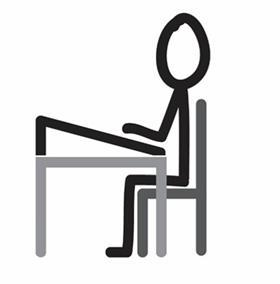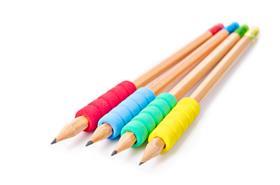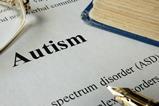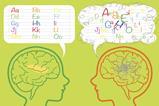Chemistry lessons need manipulation skills, organisation and writing. It’s easy to make a few changes to help students who find these demands difficult
What is Dyspraxia?

People with dyspraxia are of normal intelligence but have particular difficulties in two areas that can affect learning: muscular coordination and organisation. Dyspraxia affects around 5% of the population.
Coordination difficulties can vary in severity. Gross motor problems cause poor overall muscle movement. That leads to clumsiness and difficulty with balance and hand-eye coordination. Fine motor skills affect tasks involving manipulation and finger control, such as writing or using chemical apparatus, and these are difficult for some students.
Disorganisation is an integral part of dyspraxia. Short-term memory problems coupled with difficulties forward planning can result in a downward spiral of disorder, confusion and decreasing confidence.
Many people with dyspraxia also find social communication difficult. They do not readily pick up inferred and implied meanings or understand body language, jokes, metaphors or sarcasm. This can lead to misunderstandings and problems with friendships.
Students with dyspraxia are often visual, lateral thinkers. Therefore, they are creative and imaginative and can give interesting input to discussions or projects. They are often good orators and are lively and engaging. They are generally very honest.
Challenges in chemistry
Accidents will happen. Balancing on a stool during a science lesson can be difficult and requires effort and concentration. Students may bump into others, trip, and knock over apparatus or reagent bottles. Test tubes may be dropped, spillages occur and there is always a worry about burns around Bunsen burners. Students with dyspraxia may also be more sensitive to certain smells or textures.
Tasks needing fine coordination such as titrations, pipetting or weighing will be extremely difficult to perform accurately. Handwriting difficulties affect recording results, drawing graphs, writing up experiments and copying formulae.
Students with dyspraxia may forget to bring the correct equipment and books to lessons. Arrangement of work in books and files can be erratic. Timing problems may result in missed deadlines for homework. Even if work has been completed it may not be handed in on time.
General chaos may grow around an experiment. Short term memory difficulties make it hard to recall a sequence of stages in an experiment and instructions may be forgotten or misremembered.
How can teachers help?
Optimise teaching style
• Use colour, models, film clips and sound where possible to demonstrate theoretical concepts. A multisensory approach helps.
• Relate to everyday, practical examples where possible and keep lessons varied and upbeat.
• Give clear instructions and divide experiments into short, distinct steps. Clearly display these with expected times.
• Try pairing students with mixed physical coordination. Both must have a role though and the teacher should watch for friction or bullying.

Adjust seating
• Students with dyspraxia need a supportive chair. This should have a back and sides and enable the student’s feet to touch the ground.
• A writing slope may be helpful. These are relatively inexpensive to buy.
• Sitting the student at the end of a row improves their concentration, reduces disturbance of others and allows easy teacher access.
• Reduce bench clutter as much as possible and remove racks of reagents near the student. There should be no bags or items on the floor.
Modify practicals
• Place apparatus on a tray to contain spillages.
• Use slip-proof mats.
• Replace glass vessels with plastic ones.
• Substitute tall cylinders with sturdy measuring jugs (used for cooking).
• Colour code reagent bottle labels to reduce errors.
• Use an electric kettle instead of a beaker balanced on a Bunsen burner. Consider getting one adapted for disabled people that doesn’t need to be lifted.
• Provide adapted scissors.
• Ensure students wear overalls, don safety goggles and tie hair back when needed. Lab safety rules are especially important when students with dyspraxia are in the class.

Cater for writing difficulties
• Reduce the quantity of writing expected.
• Give out notes with spaces, rather than expecting students to copy from the board.
• Check their work for accuracy.
• Ideally, use computers for longer pieces of work.
• Do not be tempted to reduce the size of questions from A4 to A5 to cut down on photocopying costs. Larger paper with bigger gaps may help.
• Consider the specially adapted pencil grips, pens and rulers with handles.
Organise available exam support
Voice-to-text software can help students with severe coordination difficulties. Students with dyspraxia may be eligible for extra time and IT in exams. At 16–18 they may also qualify to have an assistant to carry out the practical exercises under the instruction of the student.
Remember rewards and praise
Being poorly coordinated and disorganised can be embarrassing and demoralising and students may become anxious and depressed. Remember to reward progress and celebrate success. At times, set challenges that require lateral thinking. Perhaps the students could debate a topic or make a presentation, song or poem. These alternative tasks may allow the ‘outside the box’ thinkers to shine. They have strong visualisation skills and a great deal of potential.

Learning difficulties and chemistry

Use these tips to make your lessons inclusive, engaging and memorable
- 1
 Currently
reading
Currently
reading
How to support students with dyspraxia
- 3


















No comments yet